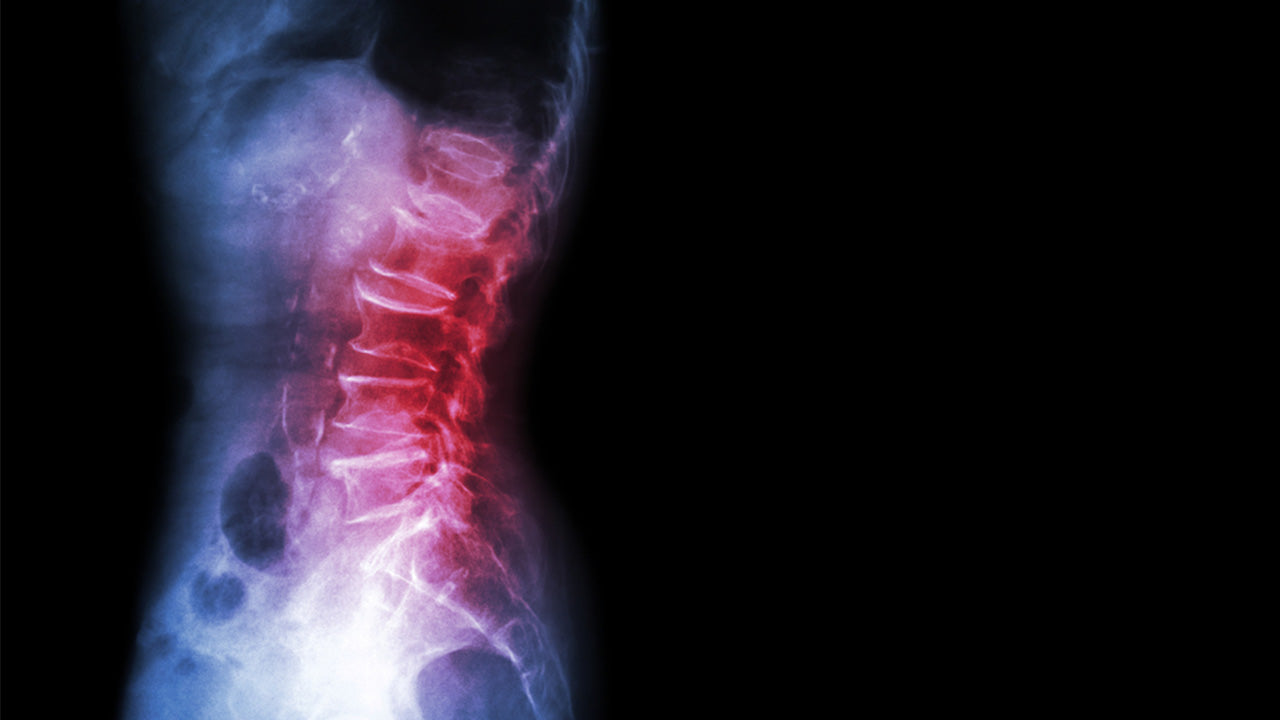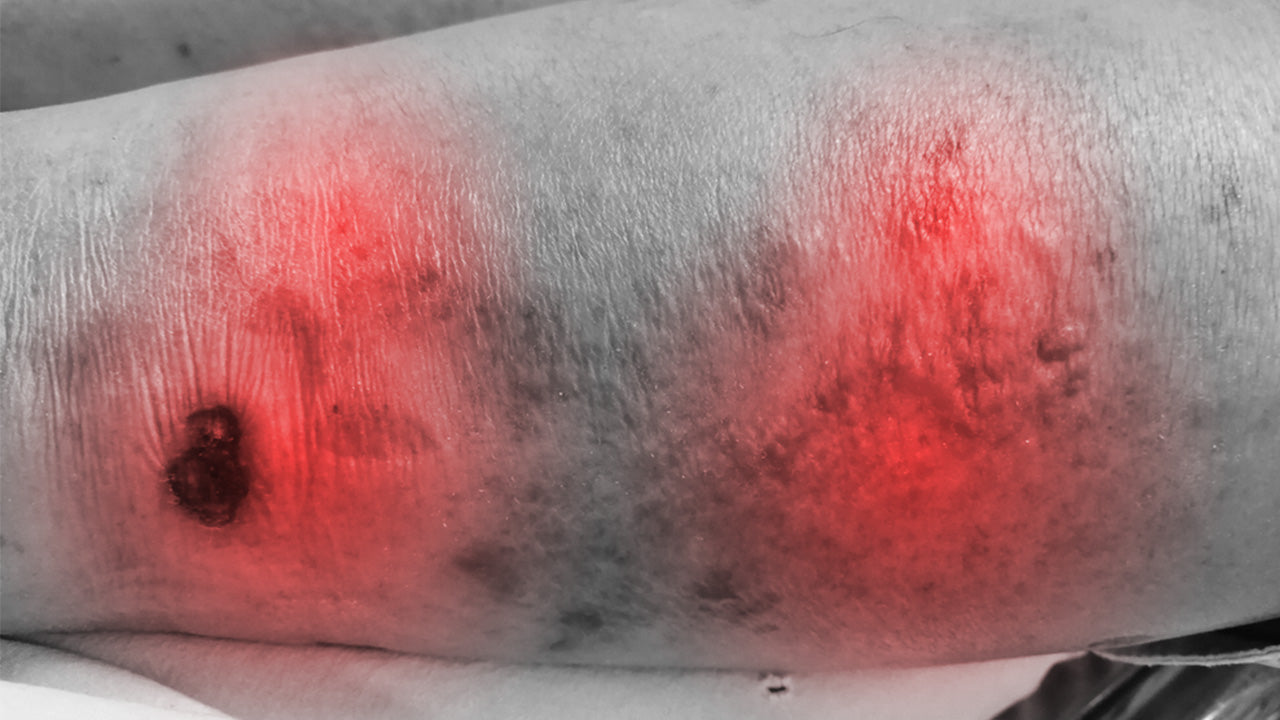Osteopenia Treatment: Let’s Exercise Those Bones!
 By: by Amino Science
By: by Amino Science

According to the National Osteoporosis Foundation (NOF), roughly 54 million Americans have either osteopenia or the more severe bone condition osteoporosis. What's more, research suggests that approximately 50% of women and 25% of men aged 50 and older diagnosed with osteoporosis will experience bone fractures at some point in their lives. And because more people are living longer, experts predict that the problem is only going to get worse. So if you're interested in finding out how to keep your bones strong and healthy for the rest of your life, read on to learn about osteopenia treatment and how exercise can help increase bone density and reduce the risk of fracture.
What Is Osteopenia?
The term osteopenia refers to bone mass that's lower than normal but not yet low enough to be considered osteoporosis. Without proper intervention, people with osteopenia may go on to develop osteoporosis. But because osteoporosis is considered a silent disease, you may not know there's anything wrong until a simple accident results in a hip or vertebral fracture.
However, a bone density test can diagnose both osteopenia and osteoporosis. It does this by calculating bone mineral density (BMD)—a measure of the amount of minerals in a segment of bone.
A bone density test is performed using a DXA scan, or dual-energy x-ray absorptiometry. The results of the test are reported using T-scores, which are based on your individual bone density as compared with that of an average 30-year-old. Scores of -1.0 and above are considered normal, while scores between -1.0 and -2.5 indicate osteopenia and scores below -2.5 signify osteoporosis.
The average person's bone density usually peaks by their late 20s. And the rate at which they begin losing bone mass depends on several factors.
For example, the hormone estrogen affects bone health by inhibiting the resorption of bone, which is why the sharp drop of this hormone at menopause puts postmenopausal women at a high risk of osteopenia and osteoporosis. However, as alluded to earlier, men lose bone mass as they age, too, and are more likely—after the age of 50—to experience a bone fracture due to osteoporosis than they are prostate cancer.
In addition to experiencing broken bones, especially wrist, vertebral, and hip fractures, the weak and brittle bones of osteoporosis can lead to height loss and stooped posture.
Depending on how strong your bones are early in life, you may not develop osteopenia at all, or you may lose bone mass earlier and at a faster rate than you can build new bone. However, the basic rule of thumb is the denser your bones are when you're young, the less likely you'll develop osteopenia when you're older.
Factors like age, sex, and race play a significant role in an individual's risk of osteopenia, but there are a number of other risk factors as well, including:
| Lack of exercise | Poor diet |
| Vitamin and mineral deficiencies | Cigarette smoking |
| Excessive alcohol consumption | Lack of sunlight exposure |
| Prior cancer treatment | Family history of bone disorders |
| Menopause | Atopic dermatitis |
| Kidney disease | Celiac disease |
| Chronic obstructive pulmonary disease (COPD) | Thyroid disorders |
| Cushing syndrome | History of eating disorders |
However, it's important to note that not everyone with osteopenia will go on to develop osteoporosis. By getting regular exercise and eating a healthy diet that includes sufficient vitamins, minerals, antioxidants, protein, and amino acids, it's possible to keep bones healthy and prevent the progression of low bone density.
Osteopenia Treatment
If you've been diagnosed with osteopenia, treatment will likely be based on your risk of breaking a bone within the next 10 years. If that risk is determined to be low, your health care provider may recommend foregoing medication and opting instead for lifestyle changes, with a special focus on diet and exercise.
Diet
An effective osteopenia diet should address the vitamin and mineral deficiencies that contribute to bone loss. Vitamins and minerals crucial for building and maintaining strong, healthy bones include iron, phosphorus, vitamin D, vitamin K, vitamin C, calcium, and magnesium.
Meat, seafood, spinach, and beans are good sources of iron, while leafy green vegetables, including kale, spinach, and collard greens, are a great source of vitamin K. And vitamin C is abundant in pineapples, mangoes, papaya, and berries.
To ensure you're getting enough calcium, look not only to dairy products but also to almonds, legumes, tofu, sardines, spinach, and kale. For magnesium, eat plenty of almonds, dark chocolate, whole grains, and artichokes.
Foods that contain wheat also tend to provide healthy doses of several vitamins and minerals needed for bone growth. However, individuals with celiac disease should avoid gluten-containing foods. In fact, studies suggest that individuals with celiac disease who ingest gluten damage not only their small intestine but their bones as well.
For example, a 2017 study published in the Indian Journal of Pediatrics found a strong correlation between gluten consumption and low bone mineral density in children diagnosed with celiac disease.
It's also imperative to get your daily dose of bone-building essential amino acids from a balanced formula such as Life.
If your diet is lacking in appropriate food sources, you might also consider taking a vitamin and mineral supplement. Look for a supplement that contains the following bone-building nutrients:
| Phosphorus | Iron |
| Vitamin D | Vitamin K |
| Vitamin C | Vitamin B12 |
| Calcium | Magnesium |
| Potassium | Boron |
| Copper | Silicon |
| Sulfur | Manganese |
Oxidative Stress and Bone Loss
A number of studies have hypothesized that oxidative stress plays a major role in the decline of bone mass.
Oxidation occurs as a natural byproduct of metabolic activity in the body. However, the reactive oxygen species produced during metabolism—including free radicals—damage the body's cells. What's more, negative influences like chronic stress, poor diet, smoking, and environmental pollution can further aggravate oxidative stress.
But by eating a diet rich in antioxidants, such as polyphenols, carotenoids, and vitamins C and E, and limiting or avoiding processed foods, trans fats, added sugar, and preservatives, the effects of oxidative stress can be minimized.
In addition, the body produces its own "master" antioxidant called glutathione, which is comprised of the amino acids glycine, glutamate, and cysteine. By consuming more foods like tomatoes, peaches, spinach, and walnuts, as well as the amino acid N-acetylcysteine (NAC), the production of glutathione can be increased.
Exercise
A 2018 report published in the Journal of Physical Activity and Health found that adults who engaged in sports early in life had higher bone density than adults who were inactive. This beneficial effect was even more pronounced in women.
However, if you've already been diagnosed with osteopenia, simply engaging in regular exercise won't ensure a decreased fracture risk because increasing bone strength depends on participating in physical activity at the right intensity level.
In other words, people with poor bone health who engage in vigorous physical activity may actually be putting themselves at risk of doing more harm than good. Therefore, to avoid the possibility of fracturing the very bones you're trying to make stronger, you should focus on engaging in low-impact weight-bearing exercises.
Moreover, exercises that involve bending and twisting motions, such as those seen in golf, should be avoided, as these maneuvers place added strain on the spinal column. Exercises that carry a high risk of falls, such as skiing, should be avoided as well.
Safe and effective exercises that increase strength, flexibility, and stability in people with osteopenia and osteoporosis include:
- Resistance band training
- Walking
- Dancing
- Stair climbing
- Gardening
- Tai chi
- Yoga
- Elliptical machine training
Medications
As discussed, people deemed to have a low risk of facture within the next 10 years may not be recommended medication at all. However, if your health provider determines that your situation warrants added support, medication to help prevent bone loss may be prescribed.
The most commonly used medications in the treatment of osteoporosis and osteopenia—the bisphosphonates—include risedronate (Actonel), alendronate (Fosamax), zoledronic acid (Reclast), and ibandronate (Boniva).
Other medications, including raloxifene (Evista), calcitonin (Miacalcin), denosumab (Prolia), and teriparatide (Forteo), may also be prescribed to prevent bone fractures and increase bone mass.
Be sure to speak with a health care professional before beginning any of these medications, as they may cause serious side effects, including anemia and osteonecrosis (death of bone tissue).
Sunlight
Vitamin D is vital for the proper metabolism of both calcium and phosphorus, which makes it critical for maintaining strong bones. And the human body produces vitamin D in response to exposure to sunlight. So aim to get at least 15 to 20 minutes of direct sun exposure—without sunscreen—on your bare skin daily.
However, people living at higher latitudes should consider adding an additional 1,000 to 4,000 International Units of vitamin D to their diet as well.
If you've been diagnosed with osteopenia or have a family history of osteopenia or osteoporosis, be sure to speak with your doctor about things you can do to reduce your risk of further bone loss. By taking steps now to improve bone health, you can help decrease your risk of potentially disabling bone fractures in the future.


Up to 25% off Amino
Shop NowTAGS: conditions
Join the Community
Comments (0)
Most Craveable Recipes




 833-264-6620
833-264-6620



















